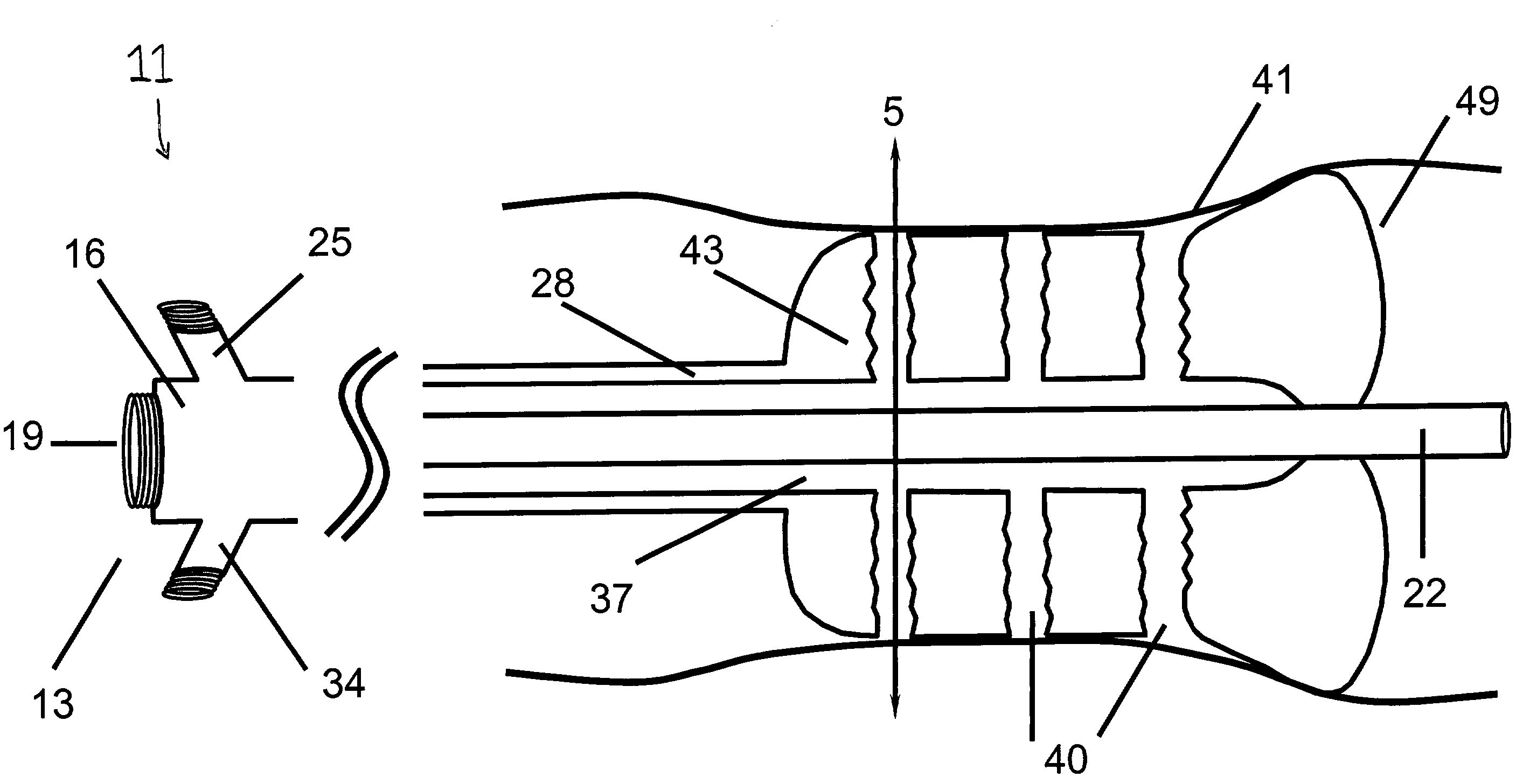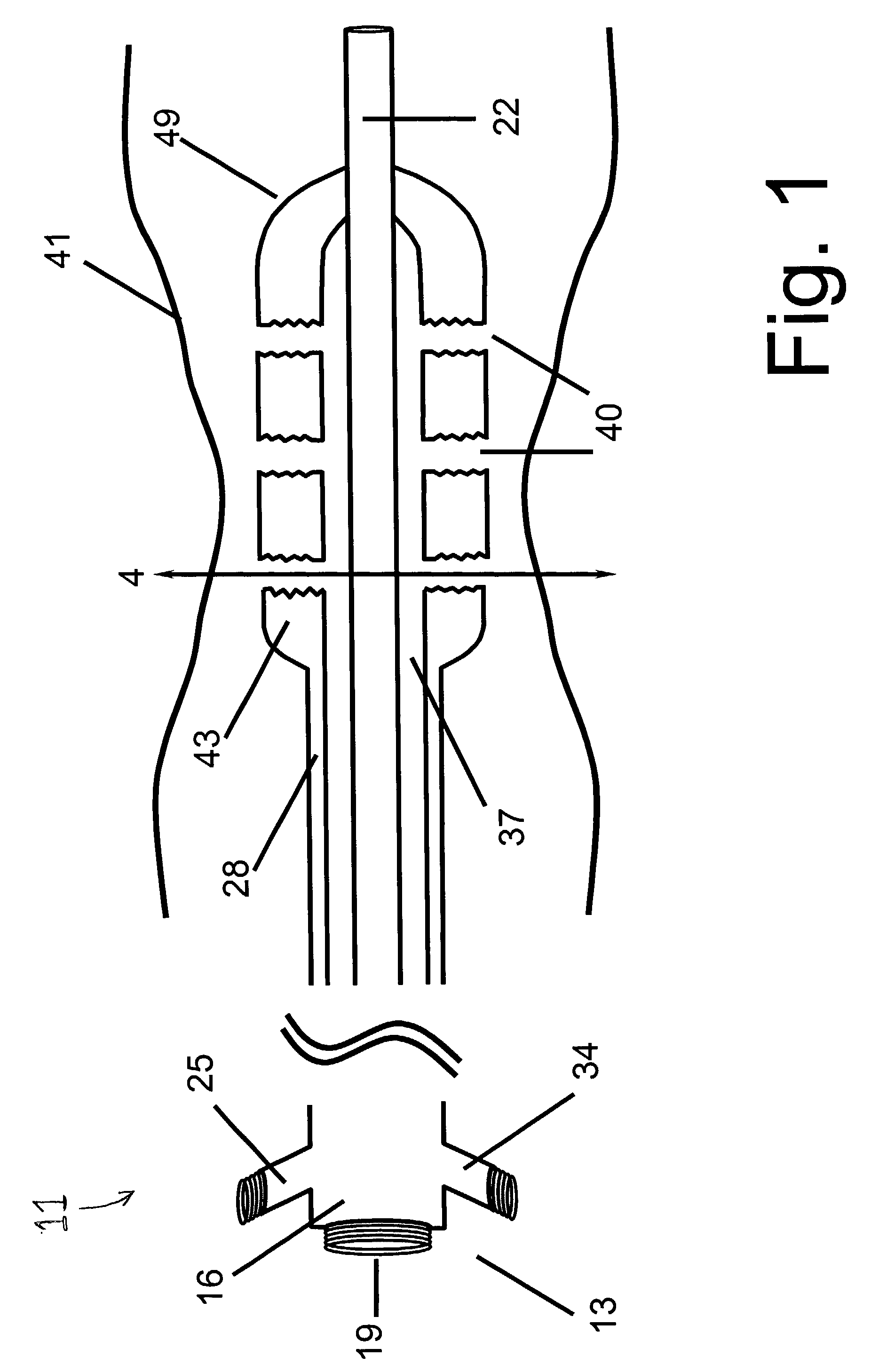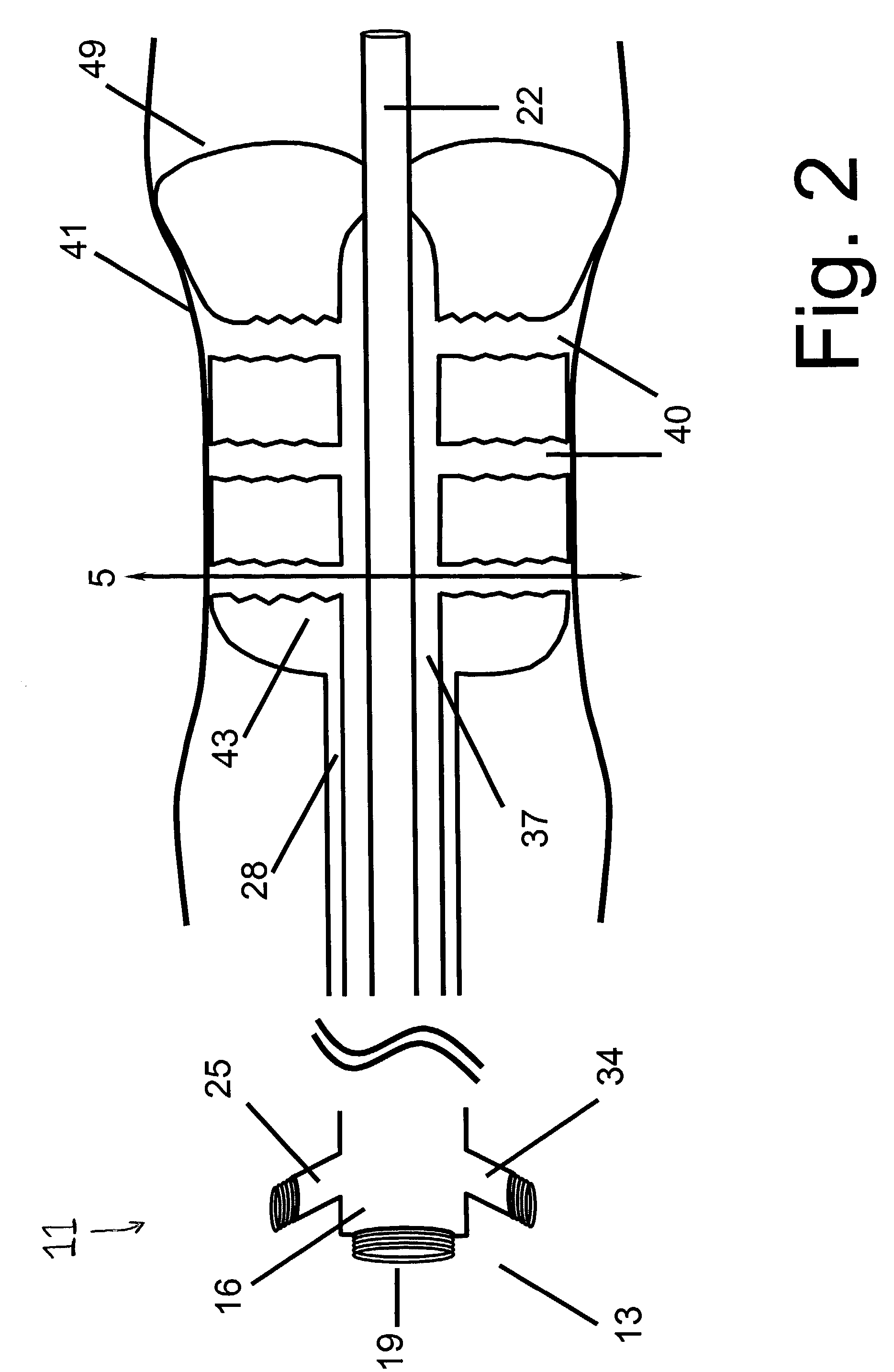Angioplasty device with embolic recapture mechanism for treatment of occlusive vascular diseases
a technology of occlusive vascular disease and angioplasty device, which is applied in the field of medical devices, can solve the problems of ischemic events, release of atherosclerotic debris, and dilation of occlusive lesions in the vessel wall,
- Summary
- Abstract
- Description
- Claims
- Application Information
AI Technical Summary
Benefits of technology
Problems solved by technology
Method used
Image
Examples
Embodiment Construction
[0016]Referring to FIGS. 1-5 generally and initially to FIG. 1, the present invention comprises an angioplasty device 11 having a suction mechanism for the removal of plaque particles. The device 11 includes an assembly having three co-axial catheters. The proximal end 13 of the assembly is connected to a three-way connector 16. The center port 19 of the connector 16 is coupled to an infusion catheter 22 which is the most inner catheter. A first side-branch 25 of the connector 16 is connected to a balloon catheter 28 which is the outermost catheter. The first side-branch 25 is used for inflating and deflating the balloon 43. A second side-branch 34 is connected to a suction catheter 37 which is located in the middle between the other catheters. The balloon catheter 28 is furnished with multiple communicating channels 40 that act as tunnels between the suction catheter 37 and blood stream. Upon enlargement of the lumen 41 by balloon 43 at the atherosclerotic site, suction of the debr...
PUM
 Login to View More
Login to View More Abstract
Description
Claims
Application Information
 Login to View More
Login to View More - R&D
- Intellectual Property
- Life Sciences
- Materials
- Tech Scout
- Unparalleled Data Quality
- Higher Quality Content
- 60% Fewer Hallucinations
Browse by: Latest US Patents, China's latest patents, Technical Efficacy Thesaurus, Application Domain, Technology Topic, Popular Technical Reports.
© 2025 PatSnap. All rights reserved.Legal|Privacy policy|Modern Slavery Act Transparency Statement|Sitemap|About US| Contact US: help@patsnap.com



